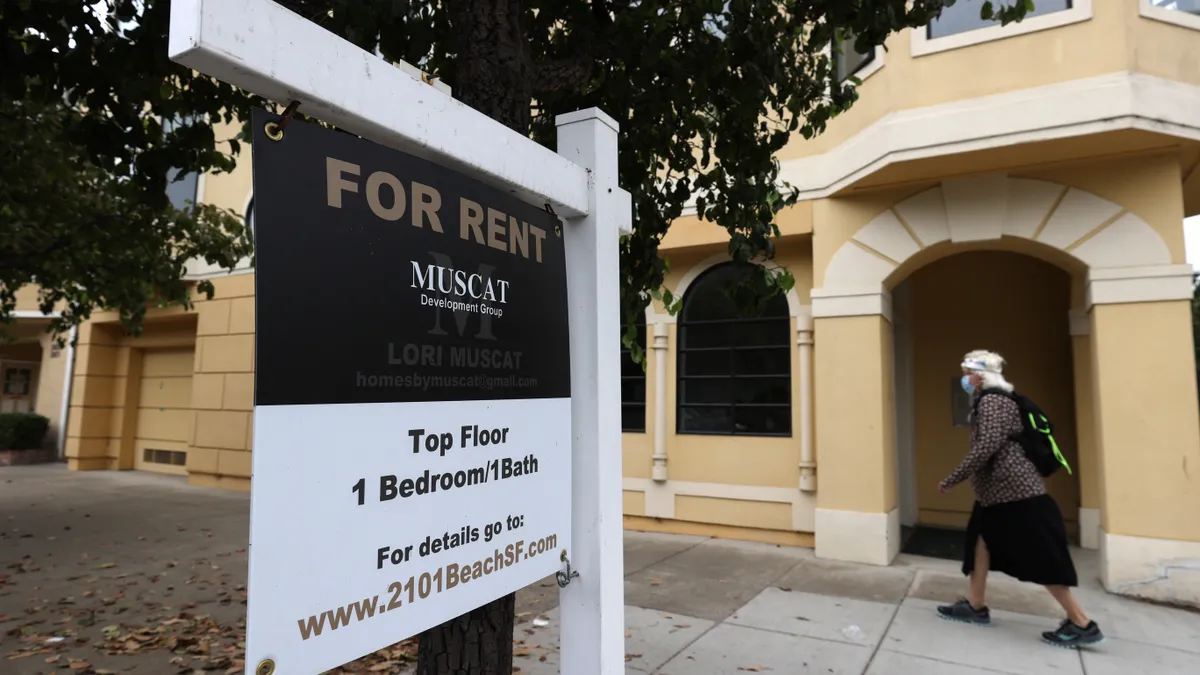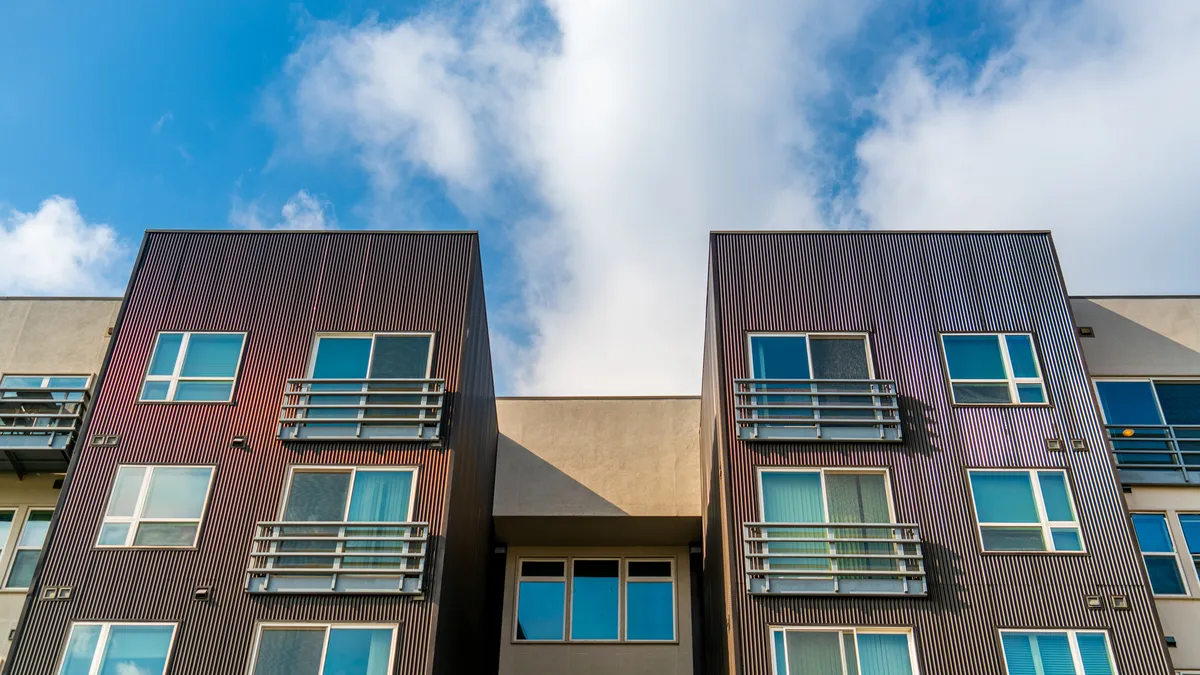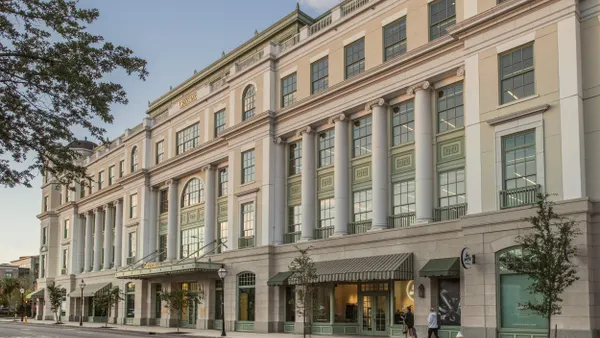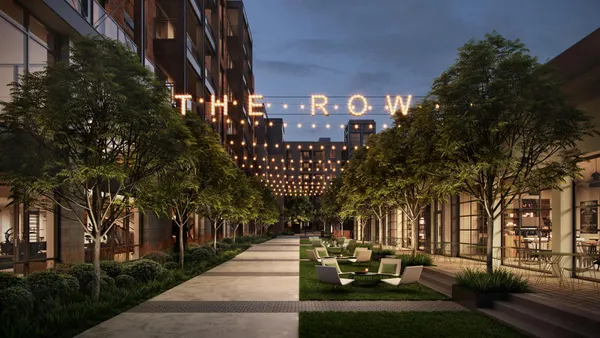Dive Brief:
- The major rental drivers shifted in the first quarter of 2021. Pent-up demand for housing, strong savings rates, a rebound in cities and migration to the Sun Belt pushed rents to an unprecedented 15% increase over the previous year, according to a new report by Yardi Matrix, an apartment market intelligence company.
- Unlike past cycles, rents increased despite underlying fundamentals, including new supply growth. Growth accelerated in every metro, and some saw increases as high as 25%. Yardi said that markets with the strongest employment change fared the best.
- The COVID-19 pandemic set the stage for this past year’s explosive rent growth. During the pandemic lockdowns, the economy lost 22 million jobs in 2020. However, all but 822,000 were regained by May 2022.
Dive Insight:
From April 2021 to March 2022, employment and rents grew in every metro, including those that had been hit hard in 2020.
But some performed better than others. Las Vegas had the strongest recovery and rents grew at 23%, according to Yardi. Strong job performers like Orlando, Florida, (average rent of $1,820, according to RentCafe) and Austin, Texas, (average rent of $1,735, according to RentCafe) also saw prices move more than 20%.
“You just have a continuation of demand released from the pandemic. You had a situation where people made it through the pandemic pretty well and they didn’t spend a lot of money,” Ric Campo, chairman and CEO of Houston-based REIT Camden Property Trust told Multifamily Dive. “So they had a lot of savings, which allowed them to decouple from roommate situations or situations that they may not have really wanted to be in pre-pandemic.”
In previous cycles, new apartment supply would mute rent growth. While there was some correlation between new supply and price increases, markets like Miami, Orlando, Austin and Charlotte, North Carolia, saw year-over-year increases of 18% despite adding new units at least double the 2.3% national average, according to Yardi.
“Despite Austin being one of the fastest-growing metros in the nation for decades, rent growth there sometimes stalls during periods when demand catches up to the heavy supply pipeline,” according to Yardi. “Last year was not one of those periods.”
A tale of two markets
Currently, rents are growing at about 10% more than wages, according to Yardi. This can’t continue forever, especially if prices for gas, food and other goods continue to increase. However, if the Federal Reserve forces a recession to curb this inflation, Yardi thinks wages and savings could take a hit, which would hurt luxury rentals and end the 15% rent increases.
Right now, the top end of the rental market is holding up well, according to Campo, whose residents have an average income of around $110,000.
“When we do surveys of people who live in Camden apartments, they’re all employed and they’re all getting raises,” Campo told Multifamily Dive. “Rents are going up but they all have the ability to pay. It would be different if our residents were stressed financially. But they’re not.”
But the situation isn’t universal. In her Midwestern portfolio, Diana Pittro, executive vice president with Chicago-based RMK Management, who manages affordable apartments, is happy to get the occupancy back that she lost during the pandemic in 2020.
“When we talked to owners, and we have numerous calls every week, we would say, ‘Look, our rents went up 16%,’” Pittro said. “But keep in mind, that's because I got rid of the month-and-a-half concession (from 2020) and that's worth 12%. So my market rent really went up 4%.”
Click here to sign up to receive multifamily and apartment news like this article in your inbox every weekday.











